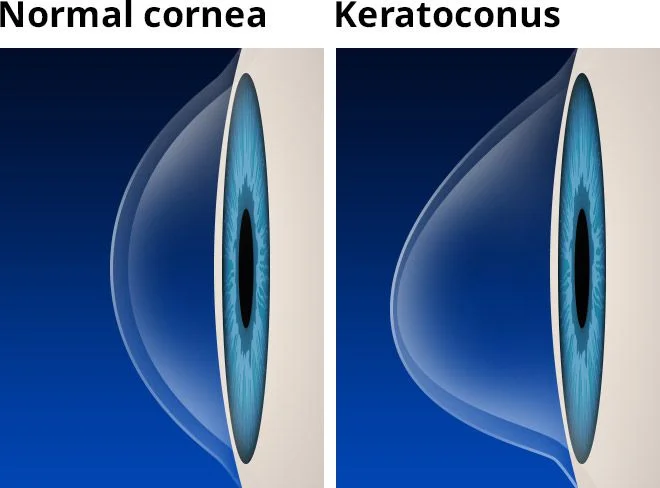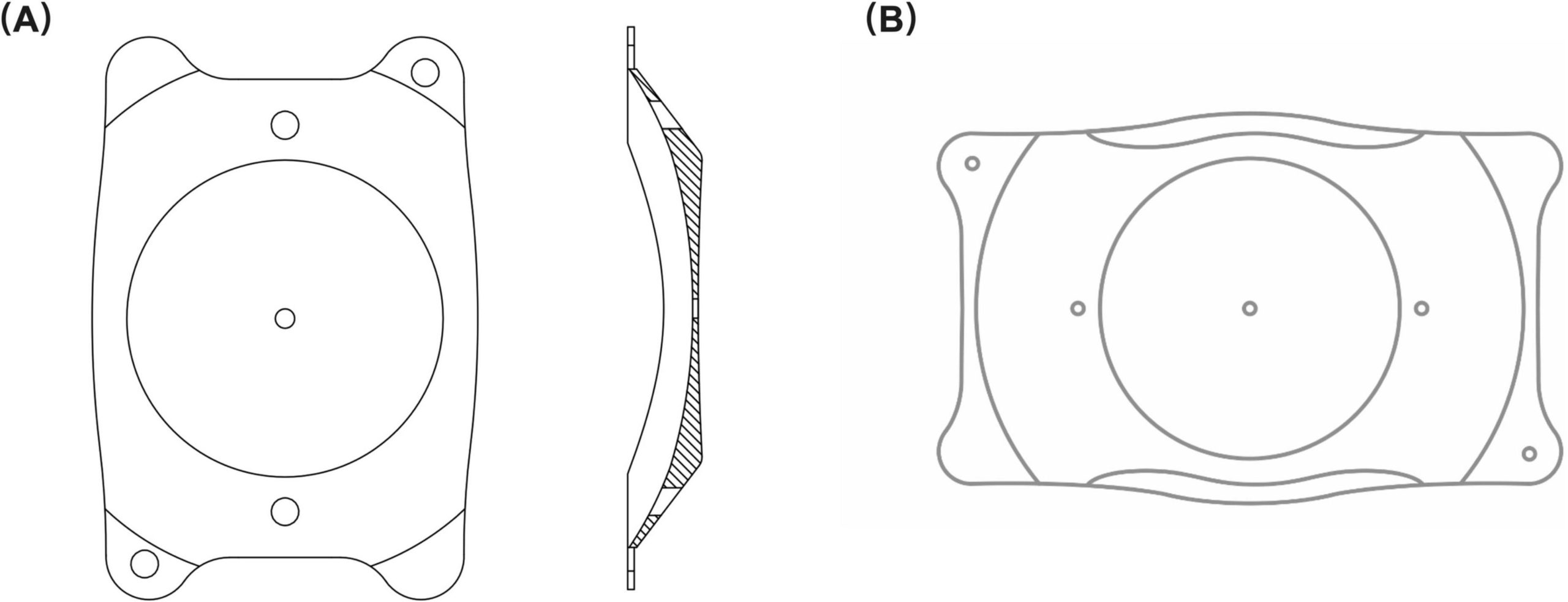Introduction
Astigmatism is one of the most common refractive errors, yet it is also one of the most misunderstood. Many people assume that it is simply a combination of myopia (nearsightedness) and hyperopia (farsightedness), but this is not correct. In fact, this condition is independent, arising when the cornea or the crystalline lens of the eye has an irregular shape. This abnormal curvature causes light rays entering the eye to scatter and focus at multiple points on the retina rather than a single sharp point. As a result, vision becomes blurred, distorted, or stretched at all distances.
Understanding Astigmatism in Detail

Eye examination helps detect refractive errors early.
To understand astigmatism, it is useful to compare it to how a normal eye works. In a healthy eye with a perfectly spherical cornea, light bends evenly and focuses on one point at the back of the eye, giving clear, sharp vision. In contrast, in an eye with astigmatism, the cornea resembles more of an oval shape, like a football, rather than a basketball. This uneven curvature prevents light from converging properly. That is why patients often describe their vision as fuzzy, with lines appearing wavy or images doubling.
Astigmatism can occur on its own, but it is also common to find it in combination with myopia or hyperopia. This overlap can complicate vision correction and often requires specialized lenses or surgical procedures for full correction.
Symptoms of Astigmatism
Many people live with mild astigmatism without realizing it, since the brain adapts to small degrees of blur. However, when astigmatism progresses or reaches a moderate degree, the following symptoms often appear:
- Blurry vision at both near and far distances
- Distorted or stretched images; lines may appear tilted
- Double vision or shadowed vision
- Eye strain, especially after reading or working on digital devices
- Frequent headaches caused by constant effort to focus
- Halos or glare around lights, particularly at night
Children with mild astigmatism, such as 0.75 diopters, may not complain of poor vision. Still, the condition can affect their school performance, causing fatigue and loss of concentration during reading or studying. Early detection is therefore very important.
Causes of Astigmatism

Normal cornea and keratoconus – a common cause of severe astigmatism.
This refractive error does not have a single cause. Instead, it can be linked to several structural and genetic factors:
- Irregular corneal curvature is the most common cause. When the cornea is unevenly curved, light entering the eye focuses at multiple points, causing blurred and distorted vision.
- In some people, the problem originates from the lens rather than the cornea. This cause is more common in older adults.
- Astigmatism can appear from childhood and tends to run in families.
- Diseases such as keratoconus make the cornea thin and bulge, creating irregular astigmatism that is difficult to correct with glasses.
- Corneal trauma or previous eye surgery can alter the corneal surface, triggering or worsening the refractive disorder.
Is Astigmatism Dangerous in Children?
Astigmatism in children, if left undiagnosed or untreated, can interfere with visual development. Potential complications include:
- Reduced school vision, such as difficulty seeing the board or books clearly.
- Amblyopia (lazy eye) due to improper visual development.
- Long-term impact on visual development.
For a 10-year-old with 0.75D, wearing properly prescribed glasses and scheduling eye exams every six months is strongly advised. Early correction is key to ensuring healthy and balanced visual growth.
Treatment Methods for Astigmatism
Current treatment methods for astigmatism include:
| Method | Characteristics | Advantages | Limitations |
|---|---|---|---|
| Eyeglasses | Use cylindrical lenses | Easy to use, low cost | May be inconvenient during physical activity |
| Toric Contact Lenses | Specifically designed for astigmatism | Aesthetic, wider field of vision | Risk of dry eyes, corneal infection |
| LASIK/SMILE | Reshape the corneal surface with laser | Popular, quick results | Not suitable for thin corneas or dry eye patients |
| Phakic ICL | Implantation of Collamer lens behind the iris | Does not damage cornea, corrects astigmatism 1–4D | Higher cost, requires experienced surgeons |
Phakic ICL – A Modern Solution for Astigmatism

Phakic ICL lens structure – an advanced solution for refractive error correction
Phakic ICL is an advanced vision correction option approved by the U.S. FDA. Unlike LASIK, which reshapes the cornea, ICL involves placing a biocompatible Collamer® lens inside the eye, between the iris and natural lens. This procedure is especially suitable for:
- Astigmatism from 1–4 diopters.
- High myopia or thin corneas unsuitable for LASIK/SMILE.
- Those seeking stable, long-term vision with reduced risk of regression or dry eye complications.
Key Advantages of Phakic ICL
- Does not damage the cornea; preserves natural structure, safer for thin corneas.
- Does not cause dry eyes since it does not cut the cornea, minimizing post-op dry eye risk.
- Vision improves significantly immediately after surgery; most patients see clearly within 1–2 days.
- Removable if necessary, offering flexibility for future vision adjustments.
- Highly effective for combined myopia and astigmatism, ensuring clear and stable vision long-term.
Astigmatism Care and Prevention
In addition to treatment, daily eye care helps reduce strain and limit astigmatism progression:
- Ensure sufficient lighting when studying or reading.
- Maintain a reading distance of 30–35 cm.
- Reduce screen time; follow the 20-20-20 rule (every 20 minutes, look at an object 20 feet away for 20 seconds).
- Encourage children to spend at least 2 hours outdoors daily.
Astigmatism is not a mixture of myopia and hyperopia but a distinct refractive error with its own characteristics and treatment pathways. Although 0.75D in young children is considered mild, timely monitoring and correction are crucial to prevent negative effects on school performance, concentration, and long-term visual development.
Fortunately, modern eye care offers a wide range of safe and effective solutions. Eyeglasses remain the simplest method, while contact lenses provide greater convenience and aesthetic appeal. For those seeking long-term correction, refractive surgeries such as LASIK or SMILE can reshape the cornea to restore clear vision. In cases where the cornea is thin, the refractive error is high, or dry eye is a concern, Phakic ICL at TD Eye stands out as an advanced option. This FDA-approved technology corrects both myopia and astigmatism without altering the corneal structure, delivering sharp vision and fast recovery.
With regular eye exams, early detection, and the right treatment, children and adults alike can maintain healthy eyesight and enjoy the benefits of clear, stable vision.

 vi
vi 25-Sep-2025
25-Sep-2025









 0916.741.763
0916.741.763 Appointment
Appointment